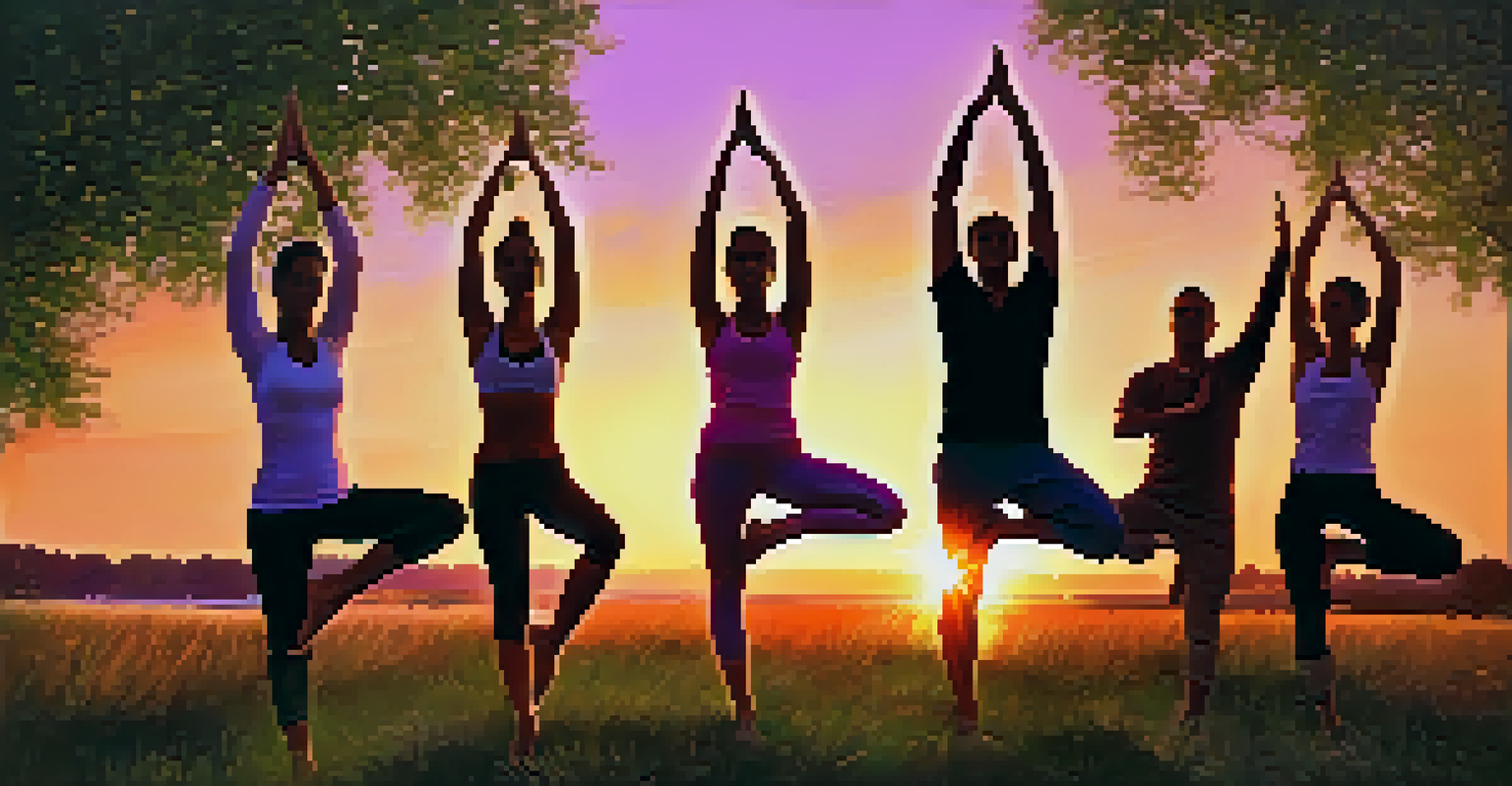How to Incorporate Core Strength Exercises into Yoga

Understanding Core Strength and Its Importance in Yoga
Core strength is the foundation of many yoga poses, supporting balance and stability. It involves not just the abdominal muscles, but also the back, hips, and pelvis. A strong core helps you maintain proper alignment and reduces the risk of injury during your practice.
The core is the gateway to the rest of the body, and the strength of the core is essential for stability and balance in all movements.
Incorporating core strength exercises into yoga can enhance your overall performance. You’ll find that poses like Plank or Boat become more accessible as your core strengthens. Additionally, a solid core can improve your endurance, allowing you to hold poses longer and with greater ease.
Ultimately, a stronger core leads to a more enjoyable yoga experience. You’ll feel more confident in your movements and less fatigued after sessions. So, let’s dive into how to effectively blend core workouts with your yoga routine!
Choosing the Right Core Strength Exercises for Yoga
When selecting core exercises, it’s essential to focus on those that complement your yoga practice. Think about movements that engage multiple muscle groups, such as planks, bridges, or bird-dogs. These exercises not only strengthen your core but also enhance your flexibility and stability.

Another great option is to incorporate Pilates-inspired movements. Exercises like the Pilates hundred can be seamlessly integrated into your yoga flow, providing a dynamic challenge. The key is to pick exercises that align with your skill level and the specific goals of your practice.
Core Strength Enhances Yoga Practice
A strong core supports balance and stability in yoga, reducing injury risk and improving overall performance.
Remember, variety is crucial. Mixing different core exercises will keep your practice fresh and engaging. It can also prevent plateaus in your strength development, ensuring continuous progress on your yoga journey.
Creating a Balanced Yoga Routine with Core Work
To integrate core strength exercises into your yoga practice, aim for a balanced routine that includes both yoga poses and core workouts. Start with a few minutes of core exercises, then transition into familiar yoga poses. This approach warms up your core and primes your body for the rest of your practice.
Strength does not come from physical capacity. It comes from an indomitable will.
For instance, you might begin with a series of planks or side planks before moving into Downward Dog. This sequence not only engages your core but also flows smoothly into your yoga routine. Balancing these elements helps maintain the rhythm and energy throughout your practice.
As you grow more comfortable, consider experimenting with different sequences and durations. Listening to your body is vital; if you feel fatigued, allow for rest and recovery. Creating a balanced routine is about finding what works best for you.
Warm-Up Exercises to Prep Your Core for Yoga
Warming up is essential before diving into any physical activity, and yoga is no exception. Specific warm-up exercises can activate your core muscles and enhance your performance. Simple moves like Cat-Cow stretches or gentle torso twists can effectively engage your core while preparing your body.
Additionally, incorporating dynamic stretches, such as lunges with a twist, can further activate your core. These warm-ups help increase blood flow and flexibility, minimizing the risk of injury. Think of this stage as setting the stage for a successful yoga practice.
Warm-Up is Key for Core Activation
Effective warm-up exercises activate core muscles and prepare the body for a successful yoga session.
Remember, a good warm-up doesn’t have to be lengthy—just a few minutes can make a significant difference. Take the time to listen to your body and adjust your warm-up routine as needed. This preparation is crucial for maximizing your yoga experience.
Combining Core Exercises with Popular Yoga Poses
One of the best ways to incorporate core strength is by combining exercises with popular yoga poses. For example, you can perform a Plank hold or Side Plank while transitioning between poses like Chaturanga or Warrior III. This combination not only strengthens your core but also builds endurance in your yoga practice.
Another effective method is to integrate core work into balancing poses. For instance, you can add a knee-to-chest movement while in Tree Pose. This not only challenges your balance but also actively engages your core, providing an added layer of difficulty to your practice.
Experimenting with these integrations can make your practice more exciting and dynamic. As you find new ways to blend core exercises with yoga poses, you’ll likely discover new strengths and abilities within yourself. Embrace the journey and enjoy the process of discovery!
Mindfulness and Breath in Core Strength Training
Mindfulness and breath are integral to both yoga and core strength exercises. When engaging your core, focus on your breath to maintain awareness and control. Deep, intentional breathing can enhance your ability to stabilize and engage your core muscles effectively.
Practicing mindfulness during core workouts can also help you better connect with your body. This connection allows you to notice how your body feels during each movement, promoting a deeper understanding of your strengths and weaknesses. It’s about listening to your body and being present in the moment.
Mindfulness Boosts Core Engagement
Focusing on breath and mindfulness during core workouts enhances stability and promotes a deeper connection with your body.
Incorporating breathwork into your core exercises can elevate your yoga practice. Techniques like Ujjayi breath can provide rhythm and focus, making challenging poses feel more manageable. Remember, the mind-body connection is a powerful tool in achieving your fitness goals.
Tracking Progress and Adjusting Your Routine
As you incorporate core strength exercises into your yoga practice, tracking your progress is essential. Keep a journal or use a fitness app to log your workouts, noting how you feel and any improvements you notice. This practice not only keeps you motivated but also helps identify areas for growth.
It's also important to adjust your routine as you progress. As your core strength increases, you may find that you can hold poses longer or try more challenging variations. Embrace this evolution and be open to changing your approach to fit your developing strength and skills.

Lastly, don’t forget to celebrate your achievements, no matter how small. Each step forward is a testament to your hard work and dedication. By tracking progress and adjusting your routine, you’ll continue to grow and thrive in your yoga journey.